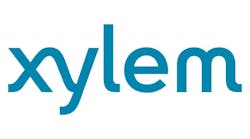Looking at most financial predictions for 2014, one would not be wildly inspired. Housing and non-residential construction are improving slowly. Overall North American economic growth is sluggish, and much as we wish it would go away, the U.S. debt/sequestration issues haven’t gone away and we could be looking at potential government shutdowns again in the near future. The U.S. fiscal and political infrastructure is a house of cards based on agreements and alliances that could fracture at any moment.
Employment is improving slowly, oil and gas prices remain uncertain, and housing is recovering too slowly. And as for the physical infrastructure and legislation to improve or fix it, it appears as listless and unlikely as a White House/Tea Party dinner.
Some economists are downright grim, believing that consumer spending will falter, that the U.S. debt, like that of the average citizen, is far too high and that we’re primed for another dreaded “correction.” The U.S. dollar continues to decline in value against other world currencies, some say, and goods imported into the U.S. will become more expensive.
But listening to the comments of most of the several dozen rental people and suppliers to the rental industry interviewed for this article, one sees a different picture: more upbeat, positive and confident, leading to the conclusion, long expressed by many in the rental industry, that the rental industry is outgrowing the economy as a whole. And in a more encouraging sign, customers of equipment rental companies — primarily contractors — are more optimistic about their prospects than at any time since the recent recession.
Companies in a position to benefit from the U.S. oil boom and likely future natural gas boom, are probably feeling especially good right now. And the fact that the United States could become a net energy exporter with low-cost energy supplies is obviously a positive signal for the U.S. economy in the coming years.
Before projecting 2014, let’s take a look back at 2013. Of the roughly three dozen U.S. and Canadian rental companies interviewed for this article, all but one reported volume and profitability increases in 2013, obviously a positive sign. Although numbers were not yet final, three said they expected to finish with increases in the 30-percent range, and another nine in double digits. Three or four spoke of single-digit increases, with about a dozen simply saying they were up in 2013, considering it a strong year without specific numbers. Several say the second half of the year was better than the first, as many predicted it would be when we polled readers a year ago.
“Revenue overall for the year is up about 8 percent over 2012,” says Joel Theros of Theros Equipment. “Revenue for the later months in 2013 is up 15 percent or more over 2012 though.”
While volumes tend to be increasing, frustration about rental rates continues to be voiced. “We're projecting 2013 to end on a high note with revenue growing approximately 10 percent over 2012,” adds Bill Thompson of Thompson Pump. “Since ours is a specialty product rental business, you'd expect rental rates to show significant improvement. However, that's not happening. While general rental companies may be seeing an uptick in rates, our sector continues to face downward pressure. In spite of all that, our profitability has improved dramatically so far during 2013.”
The tool rental segment fared well also, says Tony English of Home Depot Rentals. “2013 has been an excellent year for The Home Depot’s tool rental business, with tool rental fees up over 15 percent versus last year, mostly driven by more customers renting new tools that we’ve made available within our 1,080+ locations across the country, with profitability growing more strongly,” English says.
The energy sector was the rising star for many companies, such as Ohio’s Leppo Rents, which started a specialty rental center Razor Rents to take advantage of the dramatic shale gas rental opportunities in Ohio. Energy markets were solid for rental companies, especially near the growing shale gas plays.
Fred Leach of Cisco Equipment says most facets of Texas-based Cisco’s business were slow in 2013, but the petroleum industry was its saving grace. “Our only market that has been driving our business is the petroleum industry,” Leach says. “We expect some non-residential and residential business; however I do not see it as being a large part of our business. Our target will remain the petroleum industry and product offerings related to that industry.”
“The non-residential construction market has historically been the backbone of Sunstate’s business and success, along with the small- to medium-sized contractors,” says Benno Jurgemeyer, CEO of Sunstate Equipment. “In recent years we have been very successful in expanding our customer base to include many larger contractors. We have also made material gains in other sectors of the rental industry, including the energy markets and industrial businesses. We have been achieving a nice diversification of our revenue base in the past two years with increased emphasis on the larger customer, energy sector and industrial opportunities. We are still early in these expanded strategies and believe there is tremendous opportunity for growth in the coming years.”
“Energy segments are still helping the overall activity levels but [also] very positive signs from general construction markets that have been down for quite a while,” says Barry Natwick of Volvo Rents. “We have also seen general non-residential and heavy civil have increased gradually throughout the year and show very positive signs into 2014.”
However, energy markets were not a panacea for everybody and the decline in coal caused problems for some.
“Anderson really benefited from the energy markets (natural gas and coal) during 2009–2012,” says Bill Gex, CEO of central Pennsylvania’s Anderson Equipment. “However, Washington’s ‘war on coal’ and low natural gas prices have virtually eliminated the need for equipment by our coal customers. Furthermore, low natural gas prices have resulted in lower equipment demand by businesses related to gas production and distribution. On the other hand, higher equipment demand by Anderson’s forestry customers, general contractors and road-building accounts has offset the declines in the energy sector.”
Roar like a lion
As the rental industry approaches 2014, for the most part the outlook is positive, and certainly more so than the views of most economists, although Eli Lustgarten, senior research analyst for Longbow Research who has studied construction-related industries in depth for years, views the prospects of rental very positively.
“Rental is the way to go, customers are wanting to rent rather than buy so the rental markets are doing quite well, and they continue to be the sources of demand,” Lustgarten said at the AED Executive Forum in September. “They continue to upgrade their fleets, and they continue to be the big spenders in the marketplace not only this year but into next year and for the foreseeable future. The more uncertain economic activity becomes, the more regulation gets in the way of companies trying to make decisions, demand for rental equipment increases because [end users] don’t have the visibility. When you don’t have the visibility, it’s a lot better to rent.”
Most rental executives interviewed for this article are solidly optimistic about 2014, with at least a third expecting growth in the 7- to 10-percent or double-digit range. Most are hesitant to predict numbers at this point, and some are cautiously expecting mild increases, but the general expectation is clearly positive. Some rental companies expect 2014 to grow more quickly than in 2013, others not as quickly, but a generally positive trend of growth is the consensus view.
“Expectations for 2014 are very high at this point,” says Sunstate’s Jurgemeyer. “Based on the trends we have been experiencing in all of our markets, and from what we know of construction projects already underway, or about to begin or bid, the opportunity for strong growth in 2014 should be excellent.”
While Al Knopp of Knopp Rental expects 2014 to “roar like a lion,” others are more cautious. “2014 will be a year where we focus on building our sales team and interacting with our customers of choice using data much more than we have done in the past,” says Fred Daniels, CEO of Ames Taping Tools. “We expect a strong year in 2014. All indicators are pointing in the right direction.”
“Cautious optimism is still the mantra,” says Thompson Pump’s Thompson. “We're expecting slow growth but there is still too much uncertainty. Governmental interference and unreasonable and unnecessary regulations continue to stifle the economy.”
Fred Matricardi of A to Z Rentals in Arizona expects about a 10-percent increase but says that number could jump to 40 percent “if our plans jell.”
Ron Chilton of National Trench Safety expects a decent year but believes the rate of growth will be slower than 2013. “We are seeing a continued improvement in our business going into 2014,” he says. “With that said, we are showing a slightly slower rate of growth than 2013 as we do not see the same backlog of big projects coming up as we saw at this time in 2012.”
Optimistic customers
For the most part rental company executives share a basic reason to feel optimistic about the year ahead, and it’s quite simple. Their customers are, for the most part, more upbeat about their prospects than they have been in years, and while not all have a strong backlog on their books, most do expect fairly consistent business, a concept — consistency — that has been clearly lacking in recent years.
“The contractors who survived the Great Recession are now better companies, well positioned and optimistic,” says Joe McCaffrey, business development manager of Able Equipment Rentals. “The situation in the Northeast is almost approaching backlog and no longer ‘one day at a time.’ The prevailing issue for many of our customers (regardless of customer size) is getting paid in a reasonable timeframe. Cash flow management is key for all of them.”
“They’re optimistic and upbeat,” adds Michael Kneeland, CEO of United Rentals. “We constantly survey our customers, and a substantial majority expects that 2014 will be as good or better than 2013. They see the same dynamics that we do: a modest but steady increase in the level of construction activity and project starts, and an improvement in the macro environment.”
“[Customers are] more on the optimistic side than we have seen in the past five to six years,” says Volvo Rents’ Natwick. “There is a significant amount of work starting late in the year this year, which is a pleasant surprise for all of us. Workload on the books is increasing, but still ultra-competitive.”
“Much of our customer base does have more work in the pipeline, and the optimism continues to improve,” says Sunstate’s Jurgemeyer. “While there is still a lot work being bid with very tight margins, we are very encouraged with a surge in the number of small- to medium-sized contractors returning to the marketplace, and the optimism many are displaying.”
However, the phrase “cautious optimism” remains prevalent as rental company executives describe their customers’ moods.
“Customers continue to be reserved about the future,” cautions Anderson’s Gex. “Unemployment remains high at 7 percent. Interest rates have crept up this year. The political gridlock in Washington has created uncertainty over a myriad of issues which in turn has had an adverse impact on development and capital spending. Overall, our customers appear to be a lot closer to ‘one day at a time’ vs. ‘a lot of work on the books.’ ”
Proactive efforts
While rental companies generally improved in 2013 and expect to continue to fare well in 2014, they didn’t just sit idly by and expect an improved economy to carry them forward into better times. Their improved performance, in most cases, owed as much to proactive steps and enhanced efficiencies as better economic conditions.
“We grew fleet, revenues and employees,” says John Hofmeyer of Chicago Cat dealer Patten Industries. “We continued improvement in efficiencies and improvements in customer service levels.”
Expansion is on the minds of some rental companies.
“We are looking for expansion opportunities in 2014,” says Theros Equipment’s Theros. “We would like to increase our local presence in the area that we currently serve with smaller branches that cater to walk-in traffic and/or the potential acquisition of another rental business.”
“We increased our capex spending heavily in the third and fourth quarters [of 2013],” says Jason Pyle, vice president of operations for National Pump & Compressor. “We believe this has positioned us very well for 2014. We plan to open in four to eight new markets in 2014.”
“We will maintain all our current sales focuses but we have also recently purchased many specialty items that are applicable to crane and rigging needs,” adds Able’s McCaffrey. “Clean power high-reach atrium maintenance equipment; eco-friendly site construction equipment that includes Tier 4 and other items; plus truck trailer sales. You have to play to your customer’s changing needs depending on the market you’re in or you’re in trouble. We increased the size of our administrative and marketing staff and hired more road and shop mechanics. 2014 will include a new website, more upgrades to our data and call center, deeper market penetration and more total logistics solution propositions for our customers.”
What to watch out for
While the outlook is for the most part positive for most rental companies, with an expansive optimistic mood as they go into the new year, there are still issues to be concerned about that could dampen prospects and cause setbacks, ranging from the political climate in Washington, to concerns about the effects of Tier 4 and its impact on the rising costs of equipment, exacerbated by rental rates not rising fast enough. Other concerns are shortages in the labor market, costs of doing business in highly regulated states such as Illinois and California, ongoing national debt, the tendency for spending to go cautious in a midterm election year, slow economic growth, changes to the tax code, the health of the oil industry, and general economic and political uncertainty. A few rental executives expressed a fear that other rental companies might become too adventurous given the improved climate and make the same past mistake of over-fleeting, creating an over-crowded equipment market with the ultimate consequence of downward pressures on rental rates.
At least a third of those interviewed for this story expressed concern over the ramifications of the Affordable Care Act, so-called “Obamacare,” with the biggest concern apparently stemming from their lack of knowledge of the law, fearing that health-care costs will rise but not really knowing what the effects will be.
“Congress and its inability to get around polarizing partisan politics is a huge problem as we all know,” sums up Theros. “It creates a psychosis that hampers growth in the marketplace. Healthcare and its cost has been and will continue to be an issue at the forefront of the hiring and decision-making process. Within the industry, Tier 4 engines are a big concern in all of our equipment and trucks as we buy new fleet. Whose version of Tier 4 compliance will work best? We will have to buy it and go through the process to find out, and that's disconcerting as customers will probably not be very patient with regeneration cycles, urea, or service points related to Tier 4 during a rental.”
“We are concerned and wary about the political climate, the ACA issues with health care and the overall debt burden we see for the federal government,” adds NTS’ Chilton. “The election year politics of 2014 could also dampen the outlook for many construction projects and that is always a concern.”
Some are concerned about government issues in regard to whether or not projects are green-lighted. “The political climate around pipeline infrastructure and fracking are a concern, as well as the government’s ability to release infrastructure projects in major cities,” says NPC’s Pyle.
Anderson Equipment’s Gex points out the “lackluster economy and the uncertainty over the future business climate in America,” adding that higher taxes, the impact of the ACA and 7-percent unemployment being issues on the minds of many business owners. However, Gex points out what many have noted in recent years. While these kinds of issues tend to impair overall demand for equipment, they also enhance rental as customers prefer to rent rather than purchase in times of uncertainty.
So along with a bunch of positives — an improved economy, recovering housing market, increasing non-residential spending, more activity for contractors, and a lot of energy exploration — some of the negative uncertainty might not be bad for the rental business either. The vast majority of rental company owners expect better days in 2014.







